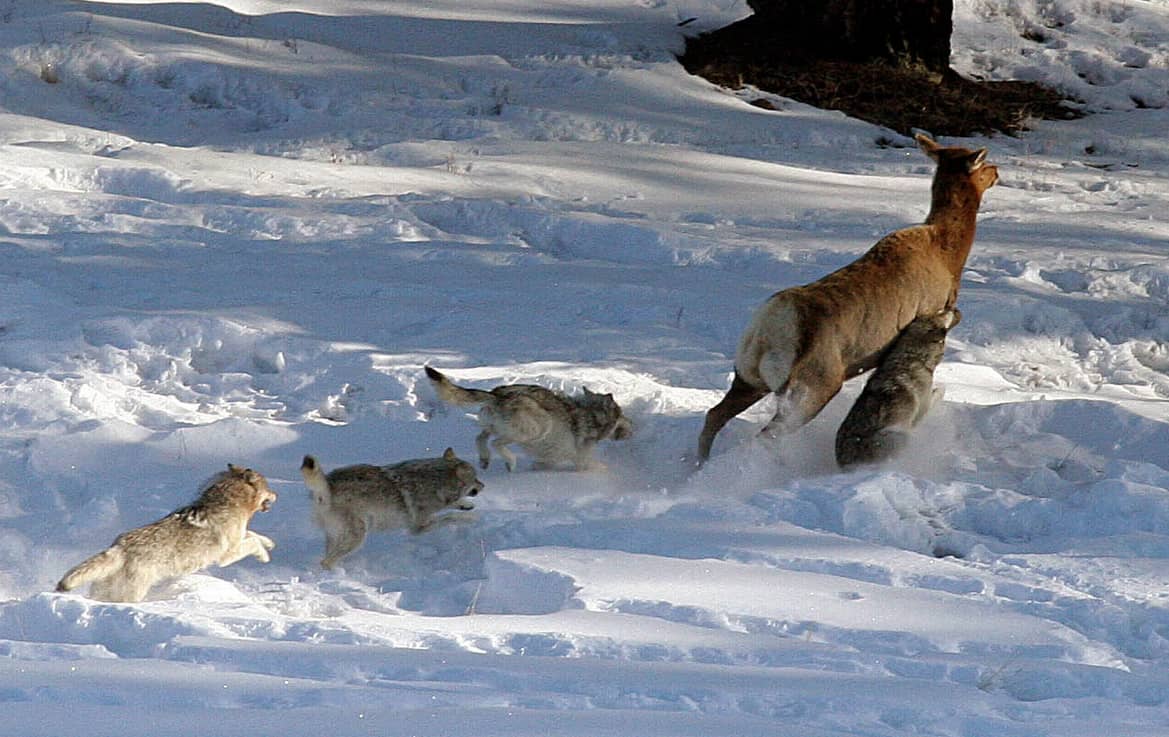Study: Inter-pack Conflicts Hamper Yellowstone Wolves’ Growth
OutdoorHub Reporters 05.15.14

Efforts began in 1995 to restore the gray wolf population in Yellowstone National Park after the animal had been absent for decades. It was an ambitious project that made Yellowstone a sanctuary for the wolves, but in 2004 the population peaked and was thereafter locked in a cycle of decline and renewal. According to the findings of a study recently published in the Journal of Animal Ecology, the number-one cause of mortality for Yellowstone wolves is fighting between packs.
“At the end of the day, the success of a wolf from an evolutionary perspective is based on how many pups it leaves behind,” Utah State University ecologist Dan MacNulty, the study’s lead author, told The Salt Lake Tribune. “If they’re packed close together, they have the opportunity to raid each other and kill pups and eliminate the competition.”
Using data collected over 13 years from 280 radio-collared wolves, researchers found that even when food was abundant, wolves still engaged in bloody pack rivalries. The National Park Service explained that wolves are even more aggressive when prey is scarce, and fights are commonly started over competition for carcasses. Although wolves attack and kill other predators like coyotes and cougars, the animals will especially target other wolves for territory.
“These [are] family groups of wolves that are competing with each other for space and resources. That is not unlike humans,” MacNulty told the Deseret News. “It is well-demonstrated that chimpanzees will compete and war with each other over space and resources and certainly humans are known to do so, if in a more sophisticated way.”
Researchers said that at a certain population density, the survival rate of both adult and young wolves drops dramatically. In this way, Yellowstone wolves have been limiting their own growth for the past several years. In-fighting within a pack has also been documented and struggles for power can often lead to the overthrow of an alpha female or male. In 2000, park officials reported that the subordinate female wolves of the Druid pack killed their alpha female and raised her pups as their own.
Researchers stated that the study shows that wolves have a constant need to expand and find new territories with few or no enemies.
“This study produced a generally novel result because the conventional thinking is that large carnivores are limited by the abundance of prey in a given area,” MacNulty said. “But what these wolves are ultimately limited by is the amount of space they have to raise their pups in safety.”
This information may prove useful to wildlife managers seeking to control populations of gray wolves, especially with packs that make their homes near humans. The US Fish and Wildlife estimates there to be more than 240 packs residing in the Northern Rocky Mountains and for the first time since the restoration of the species, wolves are hunted in every state surrounding Yellowstone.

